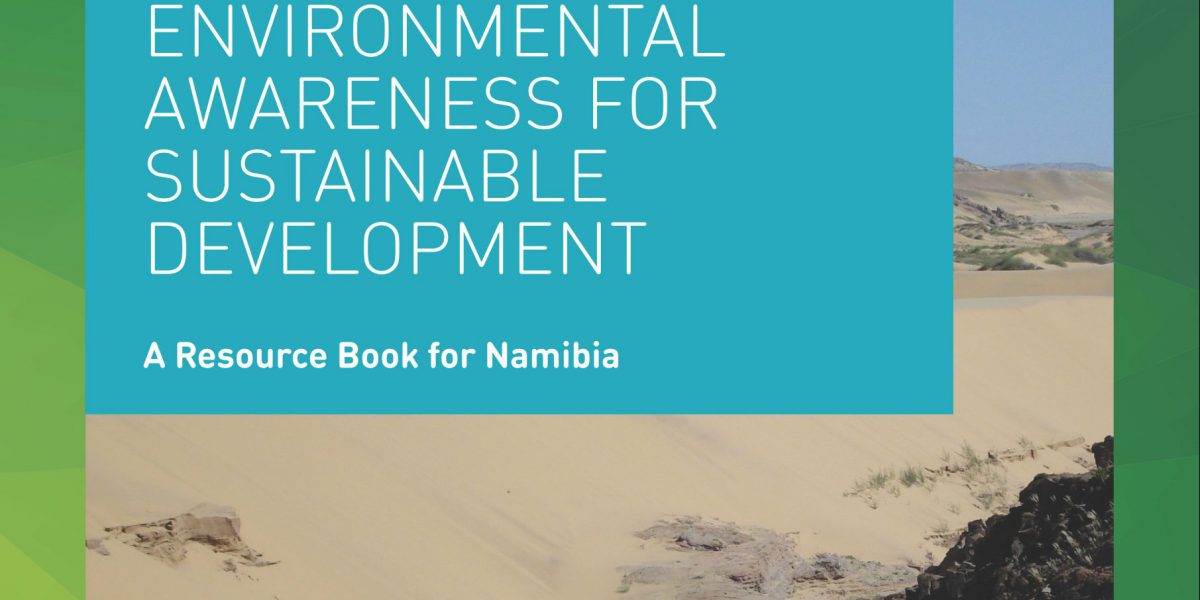The Director of the Namibian Uranium Institute is the co-author of a book entitled “Environmental Awareness for Sustainable Development – A Resource Book for Namibia”. The book was published by the Hanns Seidel Foundation and the Desert Research Foundation of Namibia, in recognition of increased environmental awareness, as the consequences of human activities manifest themselves in our natural world, and the effects of climate change are being felt across national and international boundaries.
The concept of sustainability is inseparable from proper environmental management and enshrined in the United Nations Sustainable Development Goals. Closer to home, the Namibian Constitution links the wellbeing of the Namibian people to the protection and maintenance of the country’s natural environment. The Namibian Uranium Association in particular recognizes the need for sustainable development as part of its stewardship principles, and has a committee ensuring that developments in the Namibian uranium sector adhere to sustainable development practices.
The main purpose of the publication is to create awareness for environmental sustainability among people from all walks of life in Namibia. The book is particularly structured for students and teachers in remote parts of Namibia, where material on environmental awareness is not easily accessible. It is envisioned that the book will provide a good foundation for the preparation of lessons.
The book was also written with other users in mind, for example government officials and tour guides, and aims to encourage as many people as possible to become more environmentally aware.
In compiling the publication, the authors focused on the following:
- Providing a current, clearly written book that describes the environment, with particular emphasis on the Namibian context,
- Remind Namibians what natural resources are available to them and how they are being utilized,
- Outline the roles different members in society can play to contribute towards the responsible use and management of natural resources
- Encourage people to find out more about sustainability issues and ways to integrate sustainable practices into their workplaces and homes, and
- Challenge individuals to accept their responsibility in looking after Namibia’s natural resources and inspire them to develop an environmental ethic, which they are willing to follow throughout their life, and in doing so make them live more considerately within their environment.
The book is divided into four main chapters as bellow;
- Chapter 1 sets out the environmental context in Namibia and introduces concepts like environmental ethics and sustainable development goals.
- Chapter 2 represents details on the four spheres of the natural environment, namely lithosphere, biosphere, hydrosphere and atmosphere.
- Chapter 3 examines in detail how the resources listed under lithosphere, biosphere, hydrosphere and atmosphere are being used by Namibians and what impact they are having. Issues associated with resource unpredictability, scarcity and fragility are explored.
The book concludes with a chapter on environmental management and the actions that are being carried out by different levels of society to affect positive change, for example, Government through policy making and regulatory frameworks, industry through corporate governance and responsibilities towards communities, and all individuals through their daily decisions and actions.
The book can be downloaded from the Namibian Uranium Association’s website on the following link;
Hard copies are available free of charge at the Namibian Uranium Institute in Swakopmund. They can also be obtained from the offices of the Hanns Seidel Foundation and the Desert Research Foundation of Namibia in Windhoek.

